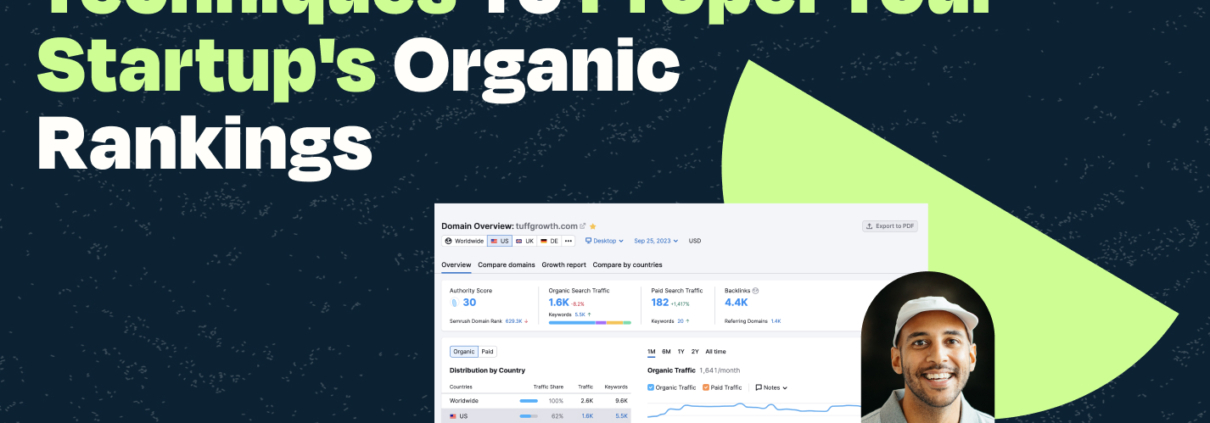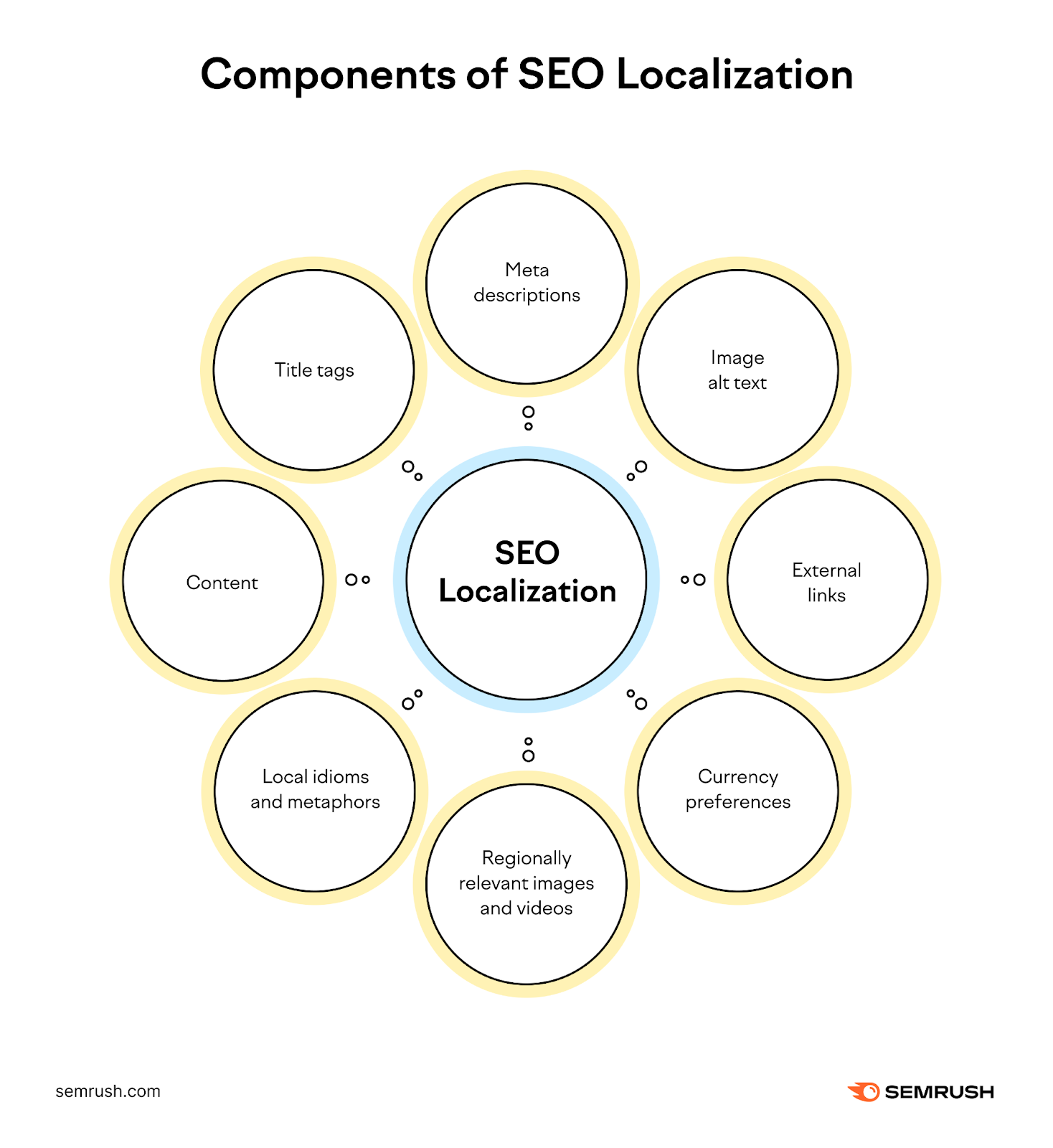Advanced Technical SEO Techniques to Propel Your Startup’s Organic Rankings

In this blog post, we’ll unravel advanced technical SEO techniques, exploring everything from the intricacies of headless CMSs to the complexities of React and beyond. Read on for more!
Technical SEO for Headless CMS & Single Page Applications (SPAs)
First, let’s zoom in on the rise of headless Content Management Systems (CMS) and how it has revolutionized how we think about content delivery on the web. Unlike traditional CMSs, headless CMSs provide greater flexibility in how content is presented, catering to the needs of different channels. However, this flexibility and the lack of built-in SEO features can present unique challenges for SEO.
First and foremost, we have to consider metatags. This may seem obvious, but these metatags (SEO title tags, meta descriptions, canonical tags, robots tags, etc.,) aren’t inherently built into headless CMss. It’s important to analyze your pages and see which tags are and aren’t present.
Another critical aspect is managing structured data. Structured data is vital for search engines to understand the context of your content. Implementing structured data in a headless CMS requires a careful approach, ensuring that the JSON-LD scripts are correctly placed and the content is accurately represented.
Finally, ensuring technical seo agency and indexing is paramount. With headless CMSs, it’s essential to regularly audit your site to make sure that search engines can access and index new and updated content. The surest way to do this, especially for JavaScript-heavy websites, is to implement server-side rendering.
Implementing Server-Side Rendering for JavaScript-Heavy Websites
In modern web development, JavaScript-heavy websites — particularly those built with frameworks like React, Angular, or Vue.js — offer dynamic user experiences but pose challenges for SEO. Implementing server-side rendering (SSR) is a key strategy to overcome these challenges, ensuring that search engines can effectively crawl and index content.
Understanding Server-Side Rendering (SSR)
The Basics of SSR
SSR involves rendering web pages on the server before they’re sent to the client’s browser. This process generates the full HTML for each page on the server, ensuring that the content is immediately available for search engine crawlers on page load. Unlike client-side rendering, where content is dynamically generated in the browser, SSR provides a complete, indexable page version from the get-go.
SEO Benefits
The primary benefit of SSR for SEO is enhanced crawlability. Search engines can easily access and index the content, as the fully rendered pages are easier for their crawlers to process. This leads to better visibility and potentially higher rankings in search engine results pages (SERPs). Additionally, SSR can improve page load times, contributing to a better user experience and Core Web Vitals, which are key factors in Google’s ranking algorithm.
Implementing SSR in JavaScript Frameworks
Framework-Specific Approaches
Each major JavaScript framework provides its own methods for implementing SSR:
- React: Libraries like Next.js provide an SSR framework for React applications. Next.js simplifies the process of turning a client-side React app into one that renders from the server.
- Angular: Angular Universal is Angular’s solution for SSR, allowing developers to pre-render Angular applications on the server.
- Vue.js: Nuxt.js is a higher-level framework built on Vue.js that provides SSR capabilities out of the box.
Challenges and Considerations
While SSR enhances SEO, it also introduces some complexities:
- Server Load: Rendering content server-side can increase the load on your servers, especially for high-traffic websites.
- Development Complexity: Implementing SSR might require architectural changes in how your application handles data fetching, routing, and rendering.
- Hydration: Once the server-rendered content is delivered to the browser, it needs to be “hydrated” into a fully interactive application. This process must be handled smoothly to maintain user experience.
SSR Best Practices
Optimize Server Performance
To mitigate the increased server load, optimize your server’s performance by implementing caching strategies. Consider using a Content Delivery Network (CDN) to distribute the load.
Monitor Core Web Vitals
Keep an eye on Core Web Vitals such as Largest Contentful Paint (LCP) and First Input Delay (FID) to make sure that SSR is positively impacting your site’s performance.
Continuous Testing and Iteration
Regularly test your application for both SEO performance and user experience. Use tools like Google’s Lighthouse to assess the effectiveness of your SSR implementation.
SEO Considerations in Website Architecture Design
The architecture of a website lays the foundation for its SEO success. Three critical components in this regard are URL structuring, internal linking, and sitemap creation.
Effective URL structuring is a cornerstone of SEO-friendly website design. URLs should be concise, descriptive, and include relevant keywords where appropriate. This not only aids search engines in understanding the content of the page, but it also enhances the user experience. A well-structured URL is easy to read and understand, both for users and search engines.
Internal linking is another crucial aspect of successful SEO. It helps search engines discover new pages and understand the hierarchy and relationship between different pages on your site. Strategic use of internal links, with relevant anchor texts, can distribute page authority throughout your site, boosting the SEO performance of individual pages.
XML Sitemaps
Lastly, sitemaps are vital for SEO. An XML sitemap acts as a roadmap for search engines, guiding them through all the important pages on your site. This is especially important for large websites or those with a complex structure, as it ensures that search engines can find and index all your content. Regularly updating the sitemap and submitting it through Google Search Console is a best practice every site should follow.
XML sitemaps become even more important when you’re dealing with programmatic SEO. In this case, it’s best to create an XML sitemap that programmatically populates based on new URLs that are saved in the database.
Robots.txt Management
The robots.txt file plays a crucial role in any SEO toolkit, especially for large or dynamic websites like ecommerce platforms. Proper management of these files can significantly impact how search engines crawl and index your site.
The robots.txt file tells search engine crawlers which parts of your site should or should not be crawled and indexed. Proper configuration of this file is critical. It should be used to prevent search engines from accessing irrelevant or duplicate pages, such as admin pages or temporary pages, which can waste crawl budget and negatively impact SEO. However, it’s crucial to make sure that no important content is inadvertently blocked from search engines.
Both XML sitemaps and robots.txt files require careful management and regular updates to align with the ongoing changes and updates of your website. Their correct implementation ensures efficient crawling and indexing by search engines, thereby supporting your overall SEO strategy.
International SEO and Localization
Expanding your startup’s reach to international markets requires a nuanced approach to SEO. International SEO and localization are about more than just translating content. They involve optimizing your website for different languages and cultural contexts to effectively engage diverse audiences.
Understanding International SEO
Cultural Nuance and Relevance
Localization goes beyond direct translation. It involves adapting your content to resonate with local cultures, customs, and preferences. This may include modifying visuals, color schemes, and website layout to suit different cultural sensibilities.
Local Keyword Optimization
Conduct thorough keyword research for each target market. Keywords that work well in one language or region might not be effective in another. Understanding local search terms and phrases is crucial for optimizing your content for international audiences.
Structuring Your Website for International Audiences
Consider whether to use country-specific domains, subdomains, or subdirectories. Each has its advantages and implications for SEO, and the choice depends on factors like target audience, budget, and technical capabilities.
Implementing Hreflang Tags
The Role of Hreflang Tags
Hreflang tags are a critical element of international SEO. They signal to search engines what language and regional targeting a page is intended for, helping to serve the correct content version to users based on their location and language preferences.
Accurate Implementation
Incorrect implementation of hreflang tags can lead to SEO issues. Make sure that each language version of your site is correctly tagged and that these tags are consistently implemented across all pages.
Security and SEO: The Importance of Security Headers and Safe Practices
Search engines prioritize user safety in their ranking algorithms, which means website security directly influences SEO. Implementing robust security measures — including the use of security headers and avoiding unsafe practices — is crucial for maintaining both user trust and search engine rankings.
HTTPS as a Ranking Signal
The Shift to HTTPS
Google has confirmed that HTTPS, which encrypts data between the user’s browser and your website, is a ranking signal. Sites using HTTPS are generally considered more secure and may receive a ranking boost.
The Role of Security Headers in SEO
1. HTTP Strict Transport Security (HSTS)
HSTS is a response header that tells browsers to only communicate with your website over HTTPS. Implementing HSTS is crucial for protecting against protocol downgrade attacks and cookie hijacking. It also reinforces your commitment to secure browsing, and search engines like that.
2. Missing X-Content-Type-Options Header
This header prevents browsers from interpreting files as something other than their declared content type. Without this header, your site could be vulnerable to MIME type confusion attacks, potentially leading to security breaches. Making sure this header is in place is a good security practice that indirectly benefits SEO by maintaining a secure site environment.
3. Content Security Policy (CSP)
CSP is a powerful tool for preventing various types of attacks, including Cross-Site Scripting (XSS) and data injection attacks. By defining which dynamic resources are allowed to load, CSP significantly improves website security. Search engines prefer secure websites because they maintain a safe user experience.
Avoiding Unsafe Practices
Mixed Content Issues
Websites using HTTPS but loading HTTP resources (mixed content) can be seen as less secure, leading to warnings in users’ browsers. This not only affects user trust but can also lead to search engines devaluing your site. Make sure all resources are loaded over HTTPS to maintain site security and SEO integrity.
Unsafe Cross-Origin Links
Links to external sites can pose a security risk if not properly managed. Adding ‘rel=noopener’ to external links ensures that the new page does not gain access to your page’s context, preventing potentially malicious scripts from accessing your site. This practice contributes to overall site security, indirectly impacting SEO by maintaining the integrity of your site.
Implementing Best Practices for Security and SEO
Regular Audits and Updates
Conducting regular security audits helps identify and rectify vulnerabilities, like missing headers or mixed content issues. Keeping your site’s security measures up to date is essential for safeguarding against attacks and maintaining search engine rankings.
Educating Your Team
Make sure that your team is aware of best practices for website security. This includes developers, content creators, and anyone else involved in your site’s maintenance. A collaborative approach to security can significantly reduce risks and help maintain SEO performance.
Staying Competitive on Search
The journey to mastering technical SEO is ongoing. It demands a blend of technical know-how, an understanding of evolving search engine algorithms, and a keen eye for user experience. By implementing these advanced techniques, startups can significantly improve their organic search rankings, providing them with a vital edge in the competitive search landscape.
At Tuff, we’re committed to staying at the forefront of these developments, continuously adapting our strategies to make sure that your startup not only keeps up, but stands out. Remember, in the world of SEO, staying still is falling behind. Continuously testing, iterating, and staying updated with the latest developments is key to sustained success. Embrace these techniques and watch your organic performance improve significantly.
Ready to take your startup to the next level? Reach out today and let’s discuss how to boost your SEO and drive sustainable growth.

Derek is a digital marketer based in Boston, Massachusetts with almost a decade of hands-on SEO experience. He finds it meaningful, challenging, and exciting to develop, test, and implement new SEO strategies. When he’s not auditing websites and optimizing content he’s usually backpacking and exploring new cultures.







